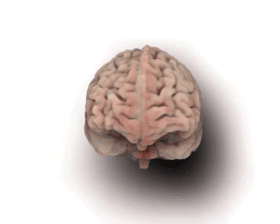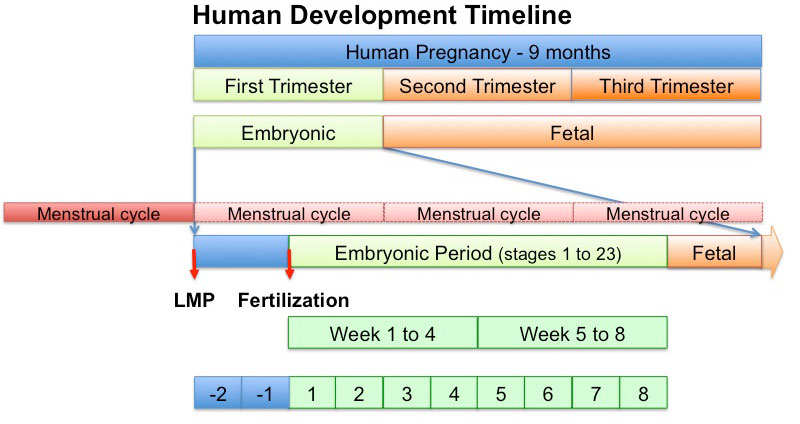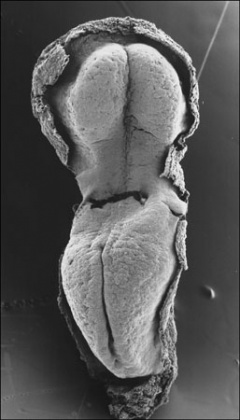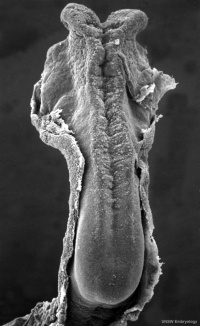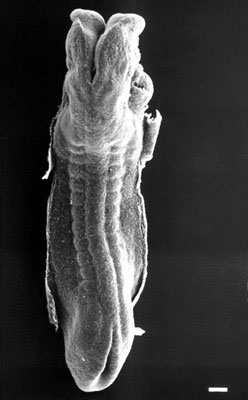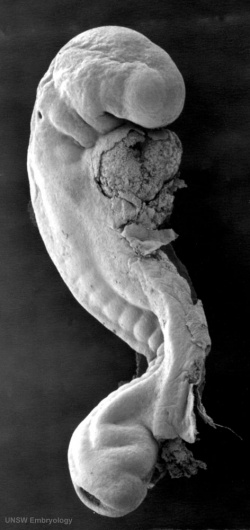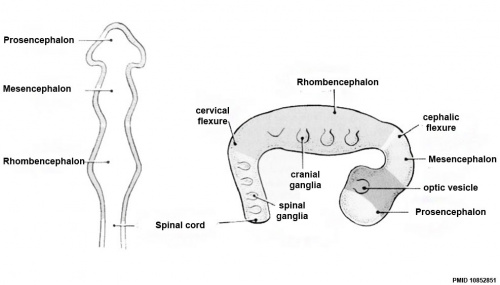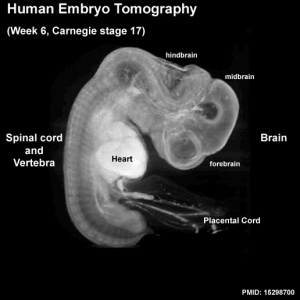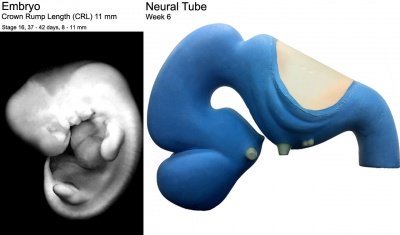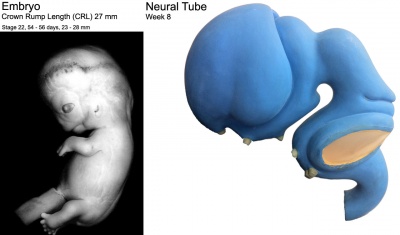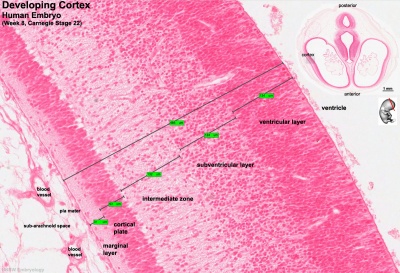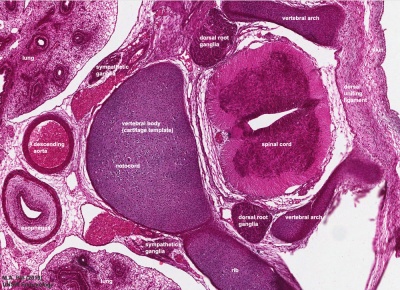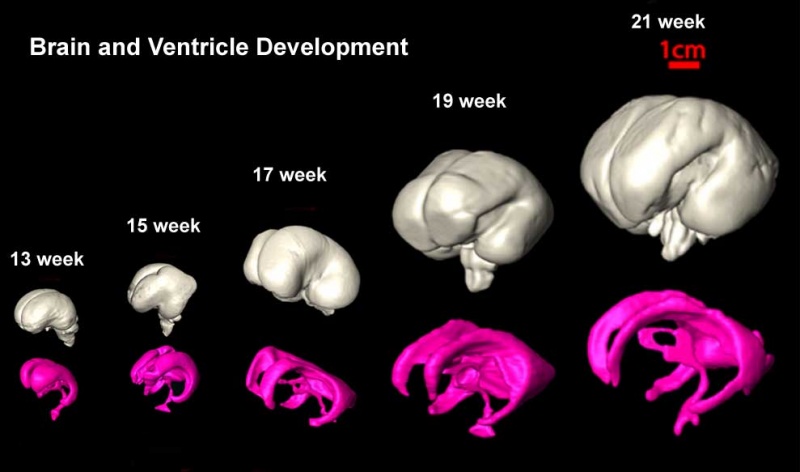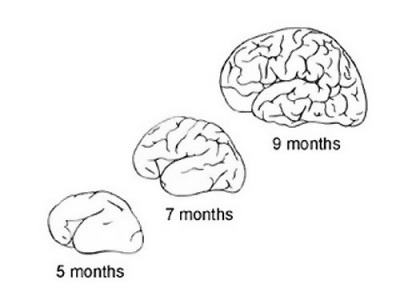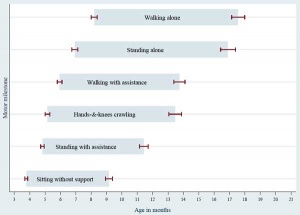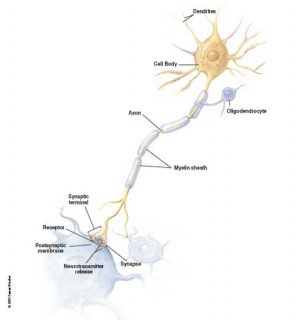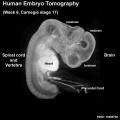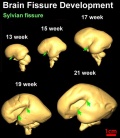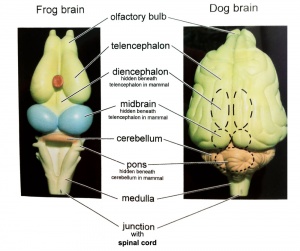K12 Brain Awareness Week
Welcome to Brain Development
Here is Human Development
This graph shows how we divide human development into different times. Key events occur in the first trimester (embryonic). The neural system continues to develop through the second and third trimester (fetal) and even after birth (postnatal). This long complex development makes it more easy to damage.
Week 3 - It begins as a Plate
Week 4 - That folds to a Tube
The tube then Closes at each End
These images show the neural tube closing leaving an opening (neuropore) at each end.
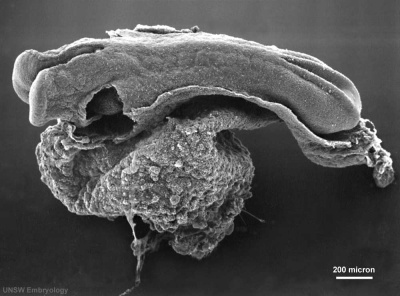
|

|
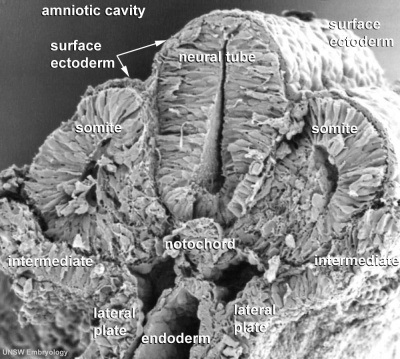
|
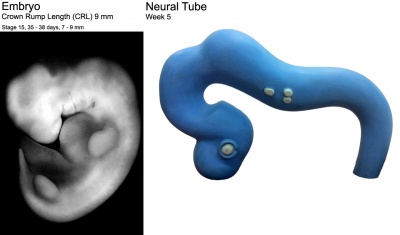
|
| Week 4 - what the neural tube looks like when cut across. | Week 5 - what the neural tube looks like within the embryo. |
Week 6 to 8 - The brain end of the tube forms 3 Vesicles
Brain
| <html5media height="600" width="520">File:Human embryo tomography Carnegie stage 17.mp4</html5media> |
Week 6 - the brain and spinal cord of the human embryo. Also visible are the heart (bright white) and placental cord containing placental blood vessels. |
Spinal Cord
At the spinal cord end - the tube stays narrow. This region begins to put out motor nerves to innervate muscle and sensory nerves grow towards the developing spinal cord.
Second Trimester - Fetal brain Grows in Size
This Scan of the living brain, shows the growth that occurs during the second trimester (red bar top right is 1 cm).
|
Third Trimester - Fetal brain Grows in Surface Area
Week 40 on - Newborn brain Grows
The brain has not finished growing at birth.
Growth you can see!
Much of the growth in size after birth is due to "white matter" development, the support cells of the brain, spinal cord and nerves.
The skeleton containers of the nervous system, the skull (brain) and vertebral arch (spinal cord), are still flexible and can expand as the nervous system grows in size.
| There is also growth you cannot see! |
|---|
| A Neuron - the functional unit of the nervous system.
To small to see with your eyes (you need a microscope) the body cell called a neuron forms the basic unit that makes up the entire nervous system.
|
| When things go wrong...
When neurons in the brain either function incorrectly or die, you have a neurological disease. Damage to spinal cord neurons and their connections (car accidents, bike accidents, diving, falls, impact, etc) is called a spinal cord injury. Abnormal growth of the support cells causes most of the brain cancers. Damage to the blood supply to the brain is the cause of brain strokes. |
Here is how the human nervous system grows
|
|
|
|
| |||||||||||||||
| Week 3 | Week 4 | Week 4 to 5 | Week 5 | Week 6 | |||||||||||||||
|
| ||||||||||||||||||
| Week 8 | Week 13 to 21 |
Here is a developing mouse nervous system
| <html5media height="420" width="340">File:Mouse CT E11.5.mp4</html5media> |
This movie shows a 11.5 days old mouse brain. (Mouse development takes 21 days and is a model used in research)
Red - brain
|
Comparative Brain Anatomy
In today's demonstration you will also see some models of brains from different species. Each coloured part on the brain models shows a different brain region each with a different function. Each brain region is the same colour (code) in all models.
- Do not worry about the names of all the different structures.
- Can you see the same coloured structures in all the brains?
- Are the same coloured structures the same shape and size in all brains?
(Link to Detailed Information, not part of demonstration)
About Brain Awareness Week
BAW - Brain Awareness Week is an inspirational global campaign that unites those who share an interest in elevating public awareness about the progress and benefits of brain and nervous system research. This current page is an updated version of earlier presentations in 2012, 2013 and 2014.
- More? Society for Neuroscience - BAW
More K12 Development Topics
More Detailed Neural Development
Glossary Links
- Glossary: A | B | C | D | E | F | G | H | I | J | K | L | M | N | O | P | Q | R | S | T | U | V | W | X | Y | Z | Numbers | Symbols | Term Link
Cite this page: Hill, M.A. (2024, April 16) Embryology K12 Brain Awareness Week. Retrieved from https://embryology.med.unsw.edu.au/embryology/index.php/K12_Brain_Awareness_Week
- © Dr Mark Hill 2024, UNSW Embryology ISBN: 978 0 7334 2609 4 - UNSW CRICOS Provider Code No. 00098G
